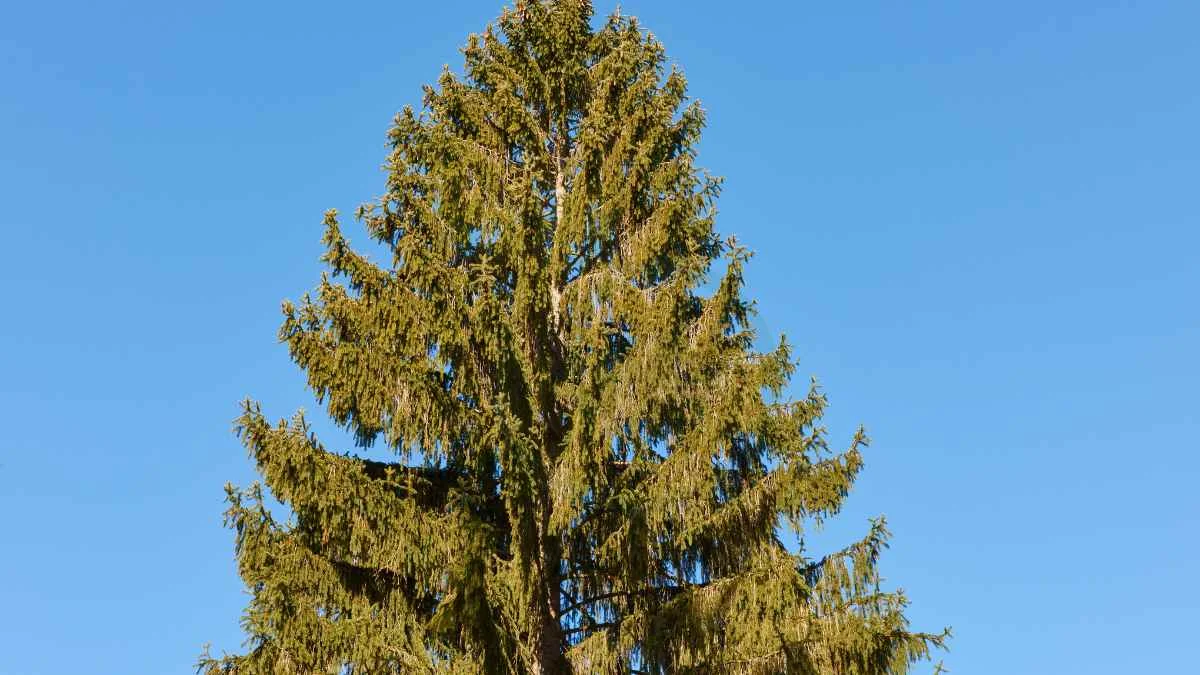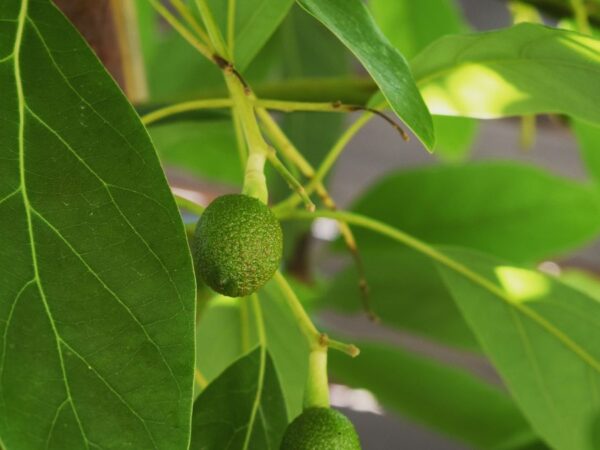How fast do Norway spruce trees grow? Understanding the growth rate of Norway spruce trees is essential for anyone considering planting them.
Norway spruce trees (Picea abies) are known for their rapid growth, typically reaching heights of 40-60 feet in just 25-30 years under ideal conditions. In optimal environments, they can grow up to 2 feet per year during their initial years. However, growth rates may vary based on factors such as soil quality, climate, and available sunlight. Generally, younger trees tend to grow faster than older ones.
For more detailed information on cultivating Norway spruce trees and maximizing their growth potential, including tips for proper care and maintenance, consult reputable forestry resources or seek advice from local arborists and horticulturists. Understanding the specific needs of these trees will ensure successful growth and development in your landscape.
Key Takeaways
- Understanding the growth factors of Norway Spruce trees is essential for promoting faster growth rates.
- Factors like sunlight, soil quality, watering practices, and routine maintenance play crucial roles in the healthy development of Norway Spruce trees.
- To enhance growth rates, ensure that Norway Spruce trees receive adequate sunlight and maintain optimal soil and root health.
- Proper watering practices are key to supporting the growth of Norway Spruce trees, especially during dry periods.
- Planting Norway Spruce trees correctly and following routine maintenance tips are vital for their successful growth and longevity.
- By implementing these actionable insights, you can effectively promote faster growth of Norway Spruce trees.
Understanding Norway Spruce
Growth Rate
Norway Spruce trees have an average growth rate of around 1-2 feet per year, making them relatively fast-growing. Factors such as soil quality, sunlight exposure, and moisture levels significantly influence the growth rate of these trees. In optimal conditions, a young Norway Spruce tree can reach maturity within 25-30 years.
Picea Abies Characteristics
The Picea Abies species, commonly known as Norway Spruce, boasts unique physical characteristics like pendulous branches, needle-like leaves, and cone-shaped structures. This species exhibits remarkable adaptability to various climates, thriving in both cold and temperate regions. Mature Picea Abies trees typically range in size from 60 to 200 feet in height.
Fast-Growing Nature
Norway Spruce trees are renowned for their rapid growth rate, outpacing many other tree species. The environmental conditions play a crucial role in determining the growth speed of these trees. Comparatively, Norway Spruce trees tend to grow faster than traditional hardwoods like oak or maple.
Factors Influencing Growth
Sunlight Impact
Norway Spruce trees rely heavily on sunlight for their growth and development. Adequate sunlight stimulates photosynthesis, crucial for the tree's energy production. To optimize growth, ensure the trees receive direct sunlight for a significant part of the day.
Sunlight exposure directly influences the tree's overall health and growth rate. Insufficient sunlight can lead to stunted growth and sparse foliage. On the other hand, ample sunlight promotes lush foliage and robust growth in Norway Spruce trees.
To enhance growth, plant Norway Spruce trees in locations with maximum sunlight exposure throughout the day. Avoid planting them in shaded areas or where they might be obstructed from direct sunlight by buildings or other structures.
Soil Conditions
Norway Spruce trees thrive in acidic soils with pH levels ranging between 4.5 and 6.0. Optimal soil pH is essential for nutrient absorption and root development in these trees. Poor soil quality can hinder growth and overall tree health.
The quality of the soil directly impacts the health and vigor of Norway Spruce trees. Well-draining soils rich in organic matter are ideal for promoting healthy root systems and robust growth. These trees flourish best in loamy soils that provide good aeration and moisture retention.
Specific soil types such as loam or sandy loam are highly suitable for Norway Spruce cultivation due to their excellent drainage properties and nutrient-rich composition.
Water Requirements
Norway Spruce trees require consistent moisture levels to thrive but are susceptible to both overwatering and underwatering. Adequate watering is crucial during dry periods to maintain optimal growth rates and prevent stress-induced issues like needle browning or dieback.
Overwatering can lead to root rot, suffocating the roots and causing irreversible damage to the tree. Conversely, underwatering results in dehydration, leading to wilting, poor growth, and eventual decline in tree health.
Establish a watering routine that ensures the soil remains consistently moist but not waterlogged. Monitor soil moisture levels regularly to adjust watering frequency based on environmental conditions and tree needs.
Enhancing Growth Rates
Optimal Planting Conditions
Norway Spruce trees thrive in well-drained soil with full sunlight exposure for optimal growth. Proper spacing between trees is crucial to allow for adequate air circulation and sunlight penetration. When planting, ensure a spacing of 10-15 feet between each tree to prevent overcrowding.
To promote healthy root development, plant Norway Spruce trees at a depth of the root ball, not deeper. Loosen the soil around the planting area to encourage root expansion and water absorption. Before planting, it's essential to prepare the soil by adding organic matter like compost to enhance nutrient availability.
Maintenance Practices
Norway Spruce trees are relatively low-maintenance once established. Regular watering is crucial during dry periods, especially in the tree's early years. Avoid over-watering, as it can lead to root rot. Trimming should be done during the tree's dormant season to shape the tree and remove dead or diseased branches.
Pruning promotes healthy growth by allowing more sunlight and air circulation within the canopy. It also helps maintain an attractive shape and prevents overcrowding. Regularly inspect the tree for signs of pests or diseases and take prompt action if any issues arise.
- Proper spacing between trees
- Depth of planting
- Soil preparation before planting
- Benefits of proper spacing
- Importance of shallow planting depth
- Significance of soil preparation
Sunlight and Norway Spruce
Importance of Sunlight
Norway Spruce trees heavily rely on sunlight for their growth. Adequate sunlight is crucial for the process of photosynthesis, where the tree converts light energy into chemical energy. Insufficient sunlight can lead to stunted growth and poor overall health in Norway Spruce trees.
Insufficient sunlight can result in sparse foliage, weak branches, and slow growth rates. This lack of sunlight inhibits the tree's ability to produce cones and develop healthy needles.
Adjusting Sun Exposure
To ensure optimal growth, it is essential to adjust the sun exposure for Norway Spruce trees. Providing shade during periods of intense sunlight can prevent sunburn on the tree's delicate foliage. Excessive sun exposure can lead to scorched needles, reduced photosynthesis, and overall stress on the tree.
Methods for adjusting sun exposure include strategically planting taller trees nearby to create natural shade or using artificial structures like shade cloth during peak sunlight hours. Monitoring the tree's response to different levels of sunlight is crucial in maintaining its health and promoting steady growth.
Soil and Root Health
Ideal Soil Types
Norway Spruce trees thrive in well-drained soils with acidic pH levels between 5.0 and 6.5. These trees prefer loamy or sandy soils that provide good drainage. To promote healthy root systems, avoid heavy clay soils that retain water.
- Suitable soil types: loamy, sandy
- Unsuitable soil type: heavy clay
- Preparation tip: Ensure proper drainage by amending the soil with organic matter like compost.
When it comes to nutrient absorption, root systems of Norway Spruce trees rely on a well-aerated root ball. The foot should be planted slightly above ground level to prevent waterlogging and root rot.
Nutrient Requirements
Essential nutrients for Norway Spruce growth include nitrogen, phosphorus, and potassium. Nitrogen supports foliage growth, phosphorus aids in root development, while potassium enhances overall tree health.
- Role of nutrients: Nitrogen for foliage, phosphorus for roots, potassium for health
- Maintaining levels: Regularly test soil pH and nutrient levels; fertilize as needed to maintain balance.
To ensure optimal nutrient uptake, avoid planting near competing vegetation that may deplete essential nutrients from the soil. Mulching around the base of the tree can help retain moisture and regulate soil temperature.
Watering Practices
Establishing Watering Routines
To ensure healthy growth of Norway Spruce trees, establish a consistent watering schedule based on their specific needs. During the initial planting phase, water the tree deeply to help its roots establish. As the tree matures, adjust the watering frequency to meet its growth requirements. Monitor the soil moisture levels regularly to determine when watering is necessary.
For young Norway Spruce trees, provide adequate water during dry periods to support their development. Typically, these trees require around 1-1.5 inches of water per week. In contrast, mature trees may need less frequent watering but in larger quantities. Water deeply to encourage root growth and drought resistance. Ensure proper drainage to prevent waterlogging that can harm the tree's roots.
Recognizing signs of dehydration or overhydration in Norway Spruce trees is crucial for maintaining their health. Look out for indicators like wilting needles, browning of tips, or drooping branches, which suggest insufficient hydration. Conversely, excessive watering might lead to symptoms such as yellowing needles or fungal growth on the trunk.
Signs of Over/Underwatering
Overwatering in Norway Spruce trees can result in issues like root rot, which manifests as mushy or discolored roots upon inspection. Visible signs above ground include wilting foliage, yellowing needles, and stunted growth. To address overwatering problems, improve soil drainage by amending it with organic matter and adjusting your watering routine accordingly.
On the other hand, underwatered Norway Spruce trees display symptoms like drooping or curling needles, premature needle shedding, and overall dryness. To rectify this issue, increase the frequency of watering sessions while ensuring that excess water drains properly from the soil. Mulching around the base of the tree can also help retain moisture and regulate soil temperature.
Maintaining an optimal watering regimen is essential for promoting the healthy growth and vitality of Norway Spruce trees. By understanding their specific hydration requirements at different stages of development and being vigilant for signs of both over and underwatering, you can nurture these majestic trees effectively.
Planting for Success
Best Season to Plant
Plant Norway Spruce trees in the spring or fall for optimal growth and establishment. Spring planting allows roots to develop before hot weather, while fall planting provides time for roots to grow before winter. Consider spring planting for faster initial growth and fall planting for better root development.
When planting in spring, ensure the soil is workable and not waterlogged. In contrast, fall planting should occur well before the ground freezes. Precautions include protecting young trees from frost damage in early spring and ensuring adequate watering during dry fall periods.
Spacing and Depth
Proper spacing between Norway Spruce trees is crucial for healthy growth. Maintain a distance of at least 10 feet between trees to prevent overcrowding and competition for resources. Planting at the correct depth, with the root collar level with the soil surface, promotes stability and proper nutrient uptake.
Achieve ideal spacing by considering the mature size of Norway Spruce trees. Ensure they have enough room to spread without overcrowding neighboring plants. Planting too shallow can lead to instability, while planting too deep may suffocate roots and hinder growth.
Routine Maintenance Tips
Pruning Techniques
Pruning Norway Spruce trees is essential for their health and appearance. Start by removing dead or damaged branches to promote growth. Regularly prune to shape the tree and maintain good structure. Avoid heavy pruning in late summer to prevent stress.
Proper pruning enhances air circulation, reducing the risk of diseases. It also promotes new growth and maintains the tree's overall health. Ensure tools are sharp for clean cuts, minimizing damage to the tree.
Fertilization Schedule
Maintaining a consistent fertilization schedule is crucial for healthy Norway Spruce trees. Choose a balanced fertilizer specifically formulated for evergreens. Apply fertilizer in early spring before new growth begins for optimal absorption.
Applying fertilizer too late in the season can stimulate late growth, making the tree vulnerable to winter damage. Water the tree thoroughly after fertilizing to help nutrients reach the roots effectively.
Promoting Faster Growth
Enhancing Environmental Conditions
To enhance the growth of Norway Spruce trees, ensure they receive adequate sunlight for photosynthesis. Plant them in well-drained soil to prevent waterlogging, which can stunt growth. fertilize the trees with a balanced formula to provide essential nutrients.
Protecting the trees from adverse weather conditions is crucial for optimal growth. Consider using mulch around the base of the tree to retain moisture and regulate soil temperature. Shield young saplings from harsh winds by planting them near structures or taller plants.
Creating an optimal growth environment involves maintaining consistent moisture levels in the soil. Regularly water the trees during dry periods to support healthy growth. Prune any damaged or diseased branches to promote overall tree health and vigor.
Advanced Care Techniques
For exceptional growth, consider implementing advanced care techniques such as root pruning to stimulate new root development and enhance nutrient absorption. Implementing a regular fertilization schedule with a high-quality, slow-release fertilizer can provide sustained nutrition for robust growth.
Address specific growth challenges by utilizing specialized methods like crown thinning to improve air circulation and reduce disease risk. Monitor for pests and diseases regularly, intervening promptly with appropriate treatments to ensure uninterrupted growth.
Experienced growers can adopt expert-level care practices like grafting to introduce desirable traits into existing trees or create unique varieties. Implementing strategic pruning techniques based on tree age and health status can optimize growth patterns and overall tree structure.
Closing Thoughts
In understanding Norway Spruce growth, factors like sunlight, soil health, and watering play a crucial role. By enhancing these aspects and following proper planting and maintenance practices, you can promote faster growth and ensure the vitality of your trees. Remember, a well-cared-for Norway Spruce not only enhances your landscape but also contributes to a healthier environment.
Now that you have the knowledge to nurture your Norway Spruce effectively, take action. Implement the tips shared here, monitor your tree's progress, and make adjustments as needed. Your commitment to fostering optimal growth will not only benefit your surroundings but also provide you with a sense of accomplishment as you watch your Norway Spruce flourish.
Frequently Asked Questions
How fast do Norway spruce trees typically grow?
Norway spruce trees can grow at a rate of around 12-24 inches per year under optimal conditions. Factors like sunlight, soil quality, and watering practices play a crucial role in determining the growth rate.
What are the key factors that influence the growth of Norway spruce trees?
The growth of Norway spruce trees is influenced by factors such as sunlight exposure, soil quality, water availability, and proper planting techniques. Ensuring these factors are optimized can help promote healthy and vigorous growth.
How can I enhance the growth rates of my Norway spruce trees?
To enhance the growth rates of Norway spruce trees, focus on providing adequate sunlight exposure, maintaining well-draining soil with proper nutrients, ensuring regular watering practices, and following recommended planting and maintenance tips.
Why is sunlight important for the growth of Norway spruce trees?
Sunlight is crucial for photosynthesis in Norway spruce trees, allowing them to produce energy for growth. Adequate sunlight exposure promotes healthy development, strong root systems, and overall vitality in these trees.
How should I water my Norway spruce trees to promote healthy growth?
Water your Norway spruce trees deeply but infrequently to encourage deep root growth. Ensure the soil is moist but not waterlogged. During hot and dry periods, increase watering frequency to support optimal growth and health.
Image Source: Paid image from CANVA




